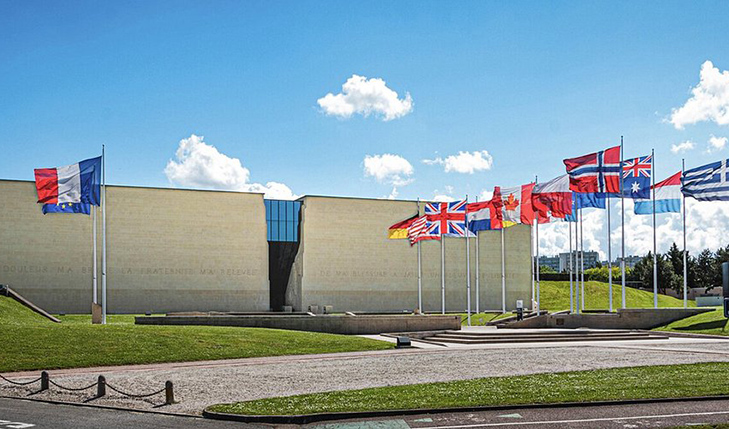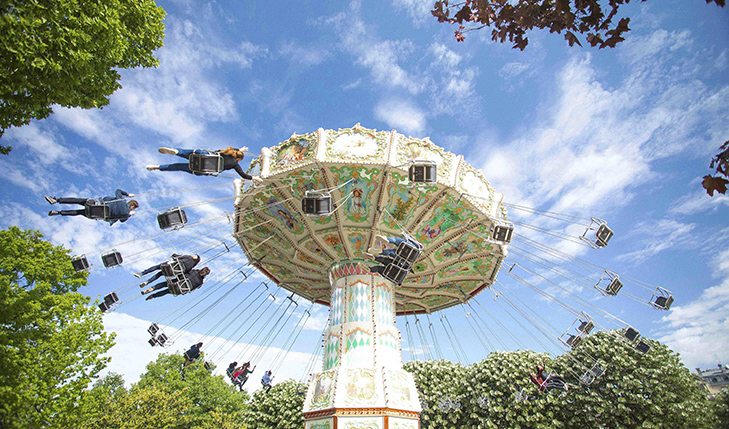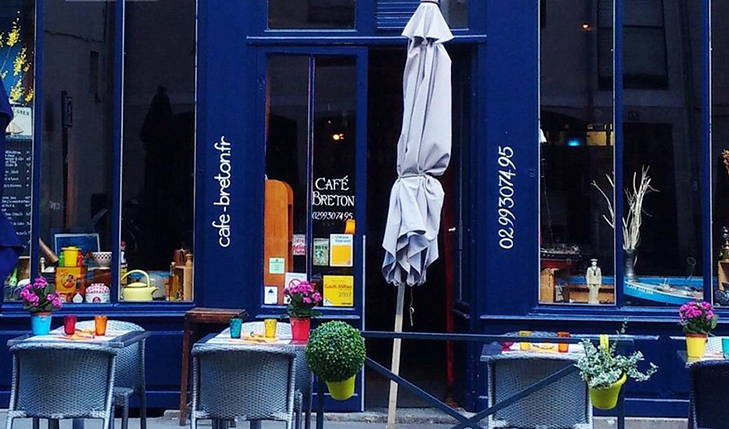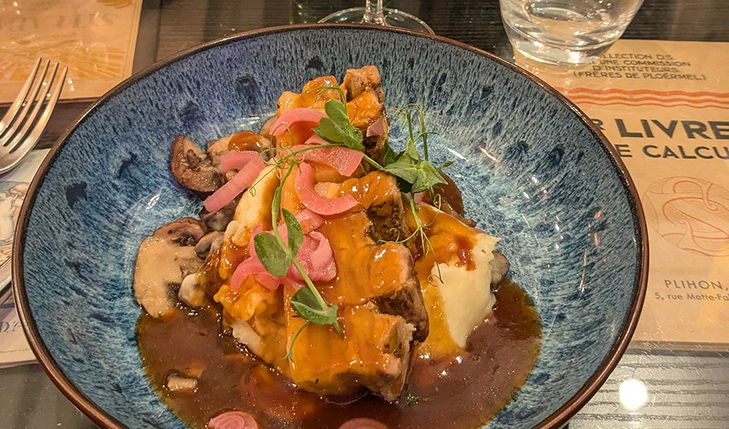I still feel the flutter in my chest when I recall those magic mornings rambling through Caen’s streets. I’ve visited my fair share of grand halls and dusty galleries—but few places hold the emotional and historical resonance of Caen. The city isn’t just a waypoint—it’s a palimpsest of stories, told in stone, canvas, and memory. And the museums here? Oh, they’re not mere repositories—they’re gateways.
Join me as I walk you through four absolutely unforgettable museums in Caen, places where the story of Normandy—in art, history, and human resilience—comes alive. For each, I’ll share three of my absolute favorite exhibits, plus three other recommended highlights, with at‑the‑moment genuine reactions, plus practical details: service, pros and cons, exact locations, how I got there, ticket prices (real ones), where I booked, opening hours, discounts… the works. I’ve tried to capture my genuine thrill.
1. Le Mémorial de Caen
Location & how I got there:
Situated on Esplanade Général Eisenhower, 14050 Caen, the Mémorial lies in the northern suburbs. I hopped the city bus no. 2 from my guesthouse just off the Château—about a 15‑minute ride. Exit at the terminus and you’re greeted by the museum’s solemn architecture and the flapping flags of Allied nations. It feels like stepping into history from the second you approach.
Opening hours & booking:
As of 2025, it’s open from April to September 9:00 AM–7:00 PM, and October to December 9:30 AM–6:00 PM. It’s closed on some holidays and mid‑January. Last entry is 1.5 hours before closing. I booked via the official site—at €20.80 for adults—and added the handy audio‑guide via their app for €3 extra. They offer reduced fares: €18.50 for seniors, students, military, local residents at €6, family pass €53—but I opted for the straight-up adult ticket. I was there mid‑May, breezing past a short line thanks to online booking. ([Mémorial de Caen][1])
My service & experience:
From the moment I presented the QR code on my phone, the staff were calm and efficient. I loved this—no fumbling with paper tickets. The audio‑guide was seamless on my phone (French or English), narrating as I moved through each gallery. The space is thoughtfully laid out—not cramped, but full of evocative displays, films, interactive zones, and even monumental outdoors gardens honoring Allied forces. The on‑site cafe “Les Pommiers” offered a Normandy‑apple‑based pastry that felt too fitting. Comfort, clarity, respect—service here felt both warm and solemnly respectful.
Three of my absolute favorite exhibits (with my personal takes):
- The Enigma M4 machine—That intricate wreck of wartime ingenuity immediately froze me in place. Standing before the German cipher device, I felt the chill of codebreakers’ rooms past. It’s tangible proof of the game‑changing mechanics of cryptography. ([Trip 2 France][2])
- General Richter’s bunker—Descending into that reinforced underground compendium of wartime command, I truly felt swallowed by history. The hushed lighting, the claustrophobic planning rooms… it’s immersive in a way no flat exhibit can match.
- Normandy Battle gallery & archival film presentation—When I arrived here, the multi‑national footage and artifacts struck me like a wave. Bomb‑scoured streets, soldiers’ letters, Resistance emblems—all chronicle the human cost, and resilience, of liberation. ([Trip 2 France][2])
Three other recommended exhibits & highlights:
- Nobel Peace Prize gallery extension—Opened in 1991, it stretches the narrative beyond war to peace-building. I paused before a display of Laureates and wished time would let me absorb it all.
- Cold War wing and Berlin Wall fragment—Juxtaposing WWII with Cold War paranoia felt incredibly effective—history doesn’t stop, and neither should our attention.
- Outdoor “American / British / Canadian” memorial gardens & Reuterswärd’s “Non‑Violence” sculpture—An open‑air tribute that brought me to tears under Norman sun, the gardens and giant iconic knotted pistol made peace feel both fragile and precious.
Pros & cons:
- Pros: Deep emotional impact, superb audio guide, varied formats (film, artifacts, immersive), convenient transport, respectful tone, plus cafe & gift shop.
- Cons: It’s big—plan 3+ hours, minimum; a few closed days mid‑January; emotional heaviness may overwhelm some.
2. Musée des Beaux‑Arts de Caen (Fine Arts Museum)
Location & how I got there:
This gem sits inside the Château de Caen (Ducal Castle) at the heart of the city. I wandered through the castle’s grounds, crossed the courtyard, and entered through the Welcome Pavilion. The castle is a 10‑minute walk from downtown hotels.
Opening hours & booking:
Typically 9:30 AM–6:00 PM (later weekends 11 AM–6 PM), closed Mondays during low season and some holidays. Tickets are modest: €5 for permanent + current exhibition; €7 for one extra exhibition; €9 for two special shows. There are great combos—“Pass Museo” (both Musée des Beaux‑Arts + Musée de Normandie) costs €8 (standard), €6 (reduced) for 3‑day access; deluxe annual passes (“Pass Murailles”) for €30 get you year‑round access for two. I bought the “Pass Museo” for €8—it felt a steal for two museums.
Service & ambiance:
Inside, the welcome staff were friendly and informative. The galleries are clean, well lit, with clear signage and English labels. A small audio‑guide desk offers guided booklets for €6 if you wish (I didn’t). The atmosphere is tranquil—but alive with art.
Three of my absolute favorite works/halls:
- Jaume Plensa’s Lou (2015) sculpture in the park—A haunting giant wire‑mesh face peering through trees, it transformed the sculpture park into a dreamscape. I walked around it, feeling like I’d stumbled into a giant’s secret garden.
- Italian Renaissance triptych: The Virgin and Child between St. George and St. James, by Cima da Conegliano—Painted with such celestial clarity, richly hued, it felt like sunlight in tempera. I literally whispered “magnifique” when I first saw it.
- Monet’s Étretat. La Manneporte, reflections on the water (1885)—One of those moments when Impressionist brush‑strokes turn you into a wave, and the Normandy cliffs were on canvas shimmering before me.
Three more recommended highlights:
- Gallery of Rembrandt, Dürer, Perugino and more—Walking through European masters across centuries was like a whistle‑stop tour of art history.
- Contemporary art and sculpture exhibits—The museum isn’t stuck in the past: modern works, especially in the sculpture garden, added freshness and contrast.
- Combined ticket benefits—The “Pass Museo” let me freely revisit exhibits over three days—perfect for slow savoring.
Pros & cons:
- Pros: Affordable, gorgeous art across eras, peaceful, beautiful setting in castle, great combo ticket.
- Cons: Smaller scale than a national museum, limited weekend hours; no central audio guide unless paid separately.
3. Musée de Normandie (inside Château de Caen)
Location & Arrival
Located within the grounds of Château de Caen, at Place du Château, 14000 Caen, the Musée de Normandie shares the castle complex with the Musée des Beaux‑Arts. I entered via the castle courtyard after visiting the Fine Arts museum, just a 10-minute walk from central Caen.
Opening Hours & Tickets
I purchased the “Pass Museo” combo ticket (valid for 3 days for both Musée des Beaux‑Arts and Musée de Normandie) for €8, which felt like a steal. Standard single admission is around €5, or €6–€7 if including a temporary exhibition. With the pass, I could revisit at leisure. The museum opens 9:30 AM – 6 PM (10 AM–6 PM at weekends), closed Mondays in low season.
Staff at the combo ticket desk were friendly and gave me a small castle map pointing out the entrances. The entrance to the Normandie museum is clearly signposted inside the castle walls.
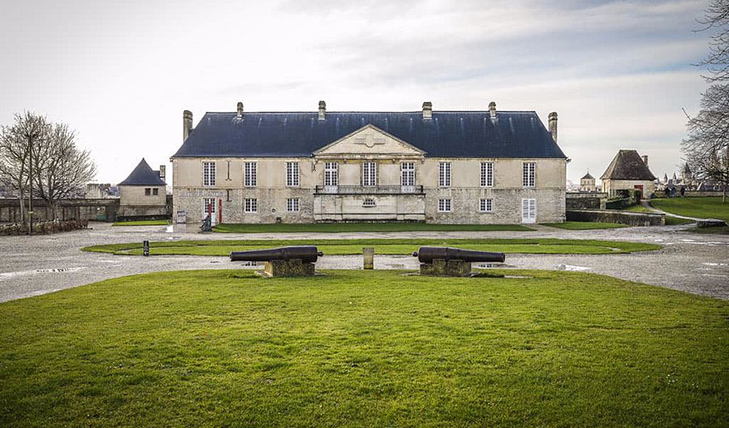
Service & Atmosphere
I immediately loved how the museum blends significant historical artifacts with engaging storytelling. The audio‑guide is optional (€6 for both museums) but I relied on English labels and my own curiosity—I felt like an amateur detective piecing together Normandy’s past.
My three favorite exhibits (and why I adored them):
- The Treasures of Saint-Germain-de-Varreville – A hoard of Roman-era silverware discovered locally. Holding the delicate ingots and ornate brooches (replicas housed; originals in Caen vaults) felt like touching Normandy’s ancient past. Their craftsmanship dazzled me—a tangible link to everyday life nearly 2,000 years ago.
- Traditional Norman Costume Display – Life‑size mannequins dressed in embroidered regional attire, complete with lace headdresses. I traced the fine St‑Lo embroidery technique and was moved imagining local women making lace by candlelight. One piece had tiny floral detail so exquisite it made me gasp.
- Medieval pottery & arc‑shaped stone sculpture from Battle of Hastings era – These sturdy clay jars and carved capitals spoke of Caen’s role in Norman dukes’ world. The tactile textures and marks of manual shaping made me feel I could sense the potter’s hand generations ago.
Three more recommended highlights:
- World War II occupation memorabilia – gas masks, ration tokens, Resistance leaflets found in Caen during the Battle of Normandy. I paused before a sullen wooden box packed with children’s postcard messages hidden in 1944. Poignant.
- Archaeological display of Neolithic tools and burial urns — a reminder that Normandy has been inhabited for millennia beyond its medieval and modern fame.
- The local crafts gallery — wickerwork baskets, oak wood carvings, and Bénouville ceramic pieces. I bought a small willow-fibre broom replica in the gift shop as a keepsake.
Pros & Cons:
- Pros: Affordable (especially with combo pass), compact but rich in artifacts, perfect complement to the Fine Arts museum, great for context on Normandy life pre‑20th century.
- Cons: Some labels only in French, no audio guide included unless paid; modest size—don’t expect blockbuster displays.
Personal reflections:
Walking through this museum felt like being a time‑traveler picking up trace memories. I savored the tactile realism of everyday objects, and realized Normandy’s story isn’t only battles and art—it is the shared domestic life and craftsmanship of generations. The low crowds meant quiet corners to reflect.
4. Mémorial Pegasus (Pegasus Bridge Museum, Ranville)
Location & Getting There
Situated at 1 Avenue du Major Howard, 14860 Ranville, just 7 km east of Caen. I took bus line 52 from Caen train station (approx. 20 min direct to Ranville stop), followed by a short uphill walk through quiet lanes to the museum. Alternatively, many rent bikes or drive (free parking available).
Opening Hours & Tickets
The museum operating hours are: 1 Feb – 31 Mar: 10 AM–5 PM; 1 Apr – 30 Sept: 9:30 AM–6:30 PM; 1 Oct – 15 Dec: 10 AM–5 PM, closed mid‑Dec to end‑Jan.
Ticket prices (2025): Adults €9.50, students/children 8+ €6.00, €8.50 low-carbon rate for train or bike visitors, group rate for adults 20+ is €7.50. Entry is free for under‑8s.
I booked onsite with QR code access but could’ve reserved online via the museum website. I enjoyed the low-carbon discount because I biked from Caen (saved ~10%).
Service & Visit Flow
At reception, welcoming multilingual staff offered a printed site map. Audio guide is now integrated: scanning QR codes at exhibits deliver history in ten languages—English included—on my own phone. That modern touch felt slick and immersive.
I spent about 1h15 walking through the museum and park, per the average duration note. There’s also a small café and shop with Pegasus-themed books and postcards.
Three of my absolute favorite exhibits:
- The original Pegasus Bridge (on display in the park) – Standing beside the rusted-than-blue WWII bascule bridge (built 1934) felt surreal—I practically felt the shockwave of gliders landing nearby. Knowing it had been purchased by the museum for one franc added to the reverence: symbolic, emotional.
- Life‑size Horsa Glider replica – The glider that transported Major Howard’s men stands in the garden. I walked inside, craning my neck at the narrow cockpit and seating—my heart soared with admiration at the bravery it embodied.
- Bill Millin’s bagpipes – The personal cornemuse carried by the piper who marched ahead of the British troops at Pegasus Bridge as bullets flew. To see it in a glass case, with a recorded oral history playing nearby, brought tears—courage frozen in sound.
Three more recommended highlights:
- Photograph and letter displays from paratroopers – the intimate correspondence home struck me hardest. One letter from Sgt. King describing moonlight on the canal touched me with its youth‑filled optimism.
- Jeep, uniforms, weapons and comms kit – original items from June 6, 1944. I especially lingered at a dusty wireless set—they built worlds with that gear.
- Guided tour option (1h30) – Although I toured solo, I saw groups with guides in English; they walked through the mapping models and context of Operation Tonga. Someday I’ll take it—I suspect it deepens the story arc.
Pros & Cons:
- Pros: Compact but emotionally powerful; accessible from Caen; integrated smartphone guides in many languages; original bridge and glider give real physical presence; reasonable ticketing and discounts.
- Cons: Remote-ish location (half‑hour total transit); fewer hours than Caen museums; no onsite audio‑guide device rental (relying on personal phone).
Personal reflections:
Walking through Pegasus felt like walking into the pages of history. Standing nose-to-nose with the original bridge and the glider, I felt the tension and courage of D‑Day. It wasn’t dusty—there was intensity. When I saw Bill Millin’s bagpipes, I swear I could hear them in my mind’s ear. I left ringing with gratitude, like a paratrooper’s heart echoing in mine.
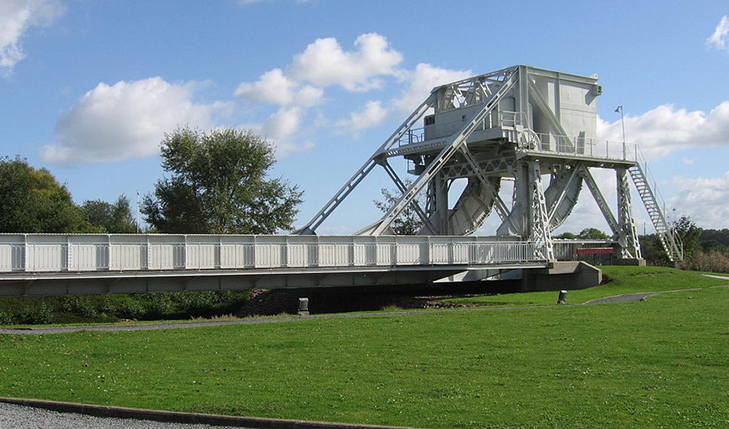
Practical Tips
- Book online where possible: Musée de Caen online tickets avoid queues, and Pegasus site offers QR check‑in.
- Time allocation: Give yourself at least 3–4 hours at Mémorial de Caen, 1–1.5 hours each for Pegasus and Château museums.
- Transport: Use Caen bus line 2 for Mémorial, line 52 for Pegasus; bikes or rental cars work too. Pegasus qualifies for low-carbon fare discount (≥10%) if arriving by bike or train.
- Combo Pass: The “Pass Museo” (valid 3 consecutive days for both Musée des Beaux‑Arts and Musée de Normandie) proves excellent value.
- Dining: The Mémorial de Caen cafés (Café du Mémorial and La Terrasse) are perfect for Normandy apple tarts or sandwiches; Pegasus has a small on-site café and picnic area.
- Emotional pacing: These museums delve into traumatic periods; it’s okay to pause, sit in the gardens, absorb Normandy’s apple orchards and calm after the emotional rooms.
Visiting these four museums in Caen and its environs gave me something truly special: Normandy’s story was not just in textbooks—it was embodied in objects, landscapes, and places. I felt awe at the bravery of D-Day in Pegasus; I felt beauty and light in Monet and Cima’s paintings; I felt ancestry in Roman silver and lace‑stitched garments; and I felt rightful pride in Normandy’s resilience.
My heart soared like a glider at Pegasus Bridge, fluttered with beauty at Château galleries, and settled into the quiet rhythm of regional life in the Musée de Normandie. If you’re coming to Normandy not just to sightsee but to feel history—to let artifacts speak—these museums are your portals.
